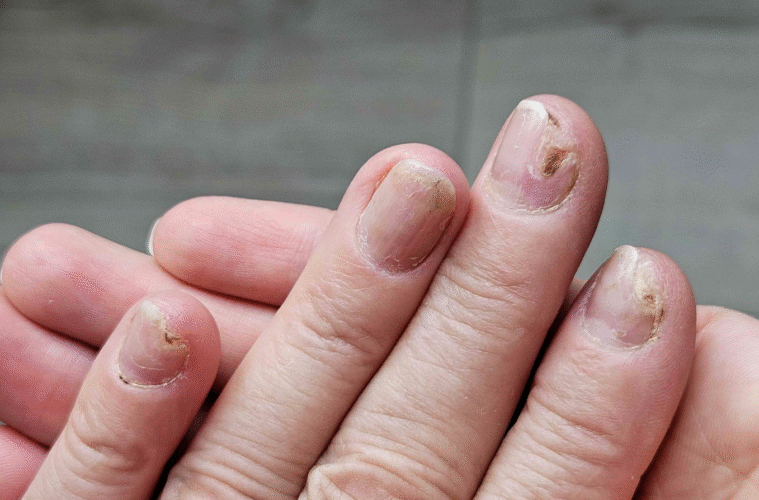Living with nail psoriasis can be frustrating. Your nails may look discolored, thickened, or brittle, and they might even feel painful when you use your hands or walk. Everyday tasks like typing, buttoning a shirt, or opening a jar can suddenly feel harder than they should.
On top of that, you might feel self-conscious about how your nails look. That’s why starting treatment is such a big step. Knowing what to expect before you commit helps you avoid disappointment and gives you the best chance for long-term success.
1. What Nail Psoriasis Really Is
Nail psoriasis isn’t the same as a fungal infection or common nail damage. It happens when your immune system speeds up the life cycle of skin cells under and around your nails. This leads to symptoms like pitting, thickening, ridges, yellow-brown discoloration, and in some cases, nails lifting from the nail bed.
Because psoriatic nails can resemble other conditions, a proper diagnosis from a dermatologist is critical. Treating the wrong problem only wastes time and can make your nails worse.
2. Treatment Takes Time
Nails grow slowly, so improvements won’t happen overnight. Even when a treatment is working, you might not see results for several months. Fingernails usually grow about three millimeters a month, while toenails grow even slower. That means any new, healthier nail growth takes time to appear.
It’s easy to get discouraged, but patience is key. Remind yourself that consistent treatment leads to gradual and lasting improvements.
3. Treatments Don’t Work the Same for Everyone
There isn’t one universal solution for nail psoriasis. Some people respond well to creams, while others need oral medications. The severity of your symptoms and your overall health both play a role in what works best. A dermatology clinic can guide you toward the right psoriasis nail treatment, since what helps one person may not work for another.
Options range from topical corticosteroids, which target the nails directly, to systemic treatments that work throughout the entire body. Systemic options are generally reserved for more severe cases, since they address the condition beyond the nails themselves.
Finding the right fit may take trial and error, so stay open to adjustments and regular follow-ups. With the right plan, you’ll be able to manage symptoms more effectively and see steady improvements.
4. Lifestyle Choices Can Support Treatment
What you do at home matters just as much as what your doctor prescribes. Keeping your nails short helps prevent them from catching or splitting, and using protective gloves during chores like washing dishes or gardening shields fragile nails from damage.
Moisturizing your hands and nails on a regular basis reduces brittleness and pain, making them less likely to crack. Even simple daily nail care steps add up, and they can make a big difference in how well your treatment works.
5. Risks and Side Effects Are Part of the Process
Every medication comes with potential side effects. Topical corticosteroids can thin your skin if used too long. Oral drugs may affect your liver, and biologics, which are injections that target specific parts of the immune system, can alter your immune response. This doesn’t mean you should avoid these options, but it does mean they require careful use and monitoring.
Your dermatologist will likely run tests and schedule follow-ups to ensure your safety. Don’t hesitate to bring up any changes you notice or concerns you may have. Open communication helps your doctor adjust the plan when needed and keeps your treatment both safe and effective.
6. Flare-Ups Can Still Happen
Even when treatment is going well, flare-ups are possible. Psoriasis is a chronic condition, and while treatments control symptoms, they don’t cure the disease. Triggers like stress, nail injuries, or changes in weather can still cause setbacks, no matter how well things are going.
That’s why consistency matters. Sticking to your plan, even during good stretches, lowers the risk of sudden flare-ups and keeps your nails healthier over time. For many patients with nail psoriasis, this steady commitment is the key to managing symptoms long term.
7. Alternative and Supportive Therapies May Help
Some people explore supportive treatments alongside standard care. Phototherapy, which uses controlled doses of ultraviolet light to slow skin cell growth, can sometimes improve nail symptoms. Supplements and natural oils may also provide extra relief.
It’s important to talk to your dermatologist before adding anything new to your routine. Not all “natural” treatments are safe, and some can interfere with prescribed medications. Think of these as add-ons rather than replacements, since combining supportive options with medical treatment usually gives better results.
8. Mental Health Matters Too
Nail psoriasis affects more than your body. It can take a toll on your confidence and emotional well-being. You might feel embarrassed about showing your hands or feet, which can lead to stress or isolation.
Acknowledging this emotional side is important. Support groups, online communities, or talking with a counselor can help. Since psoriatic disease involves both physical and emotional challenges, caring for your mental health is an essential part of managing the condition.
Final Thoughts
Starting treatment for nail psoriasis takes commitment, but it’s one worth taking. Working closely with your dermatologist and staying realistic about the process gives you the best chance of success.
With steady care and the right support, you can ease symptoms and protect your nails. Progress may feel gradual, but every step forward moves you closer to healthier, stronger nails.
Published by HOLR Magazine.


